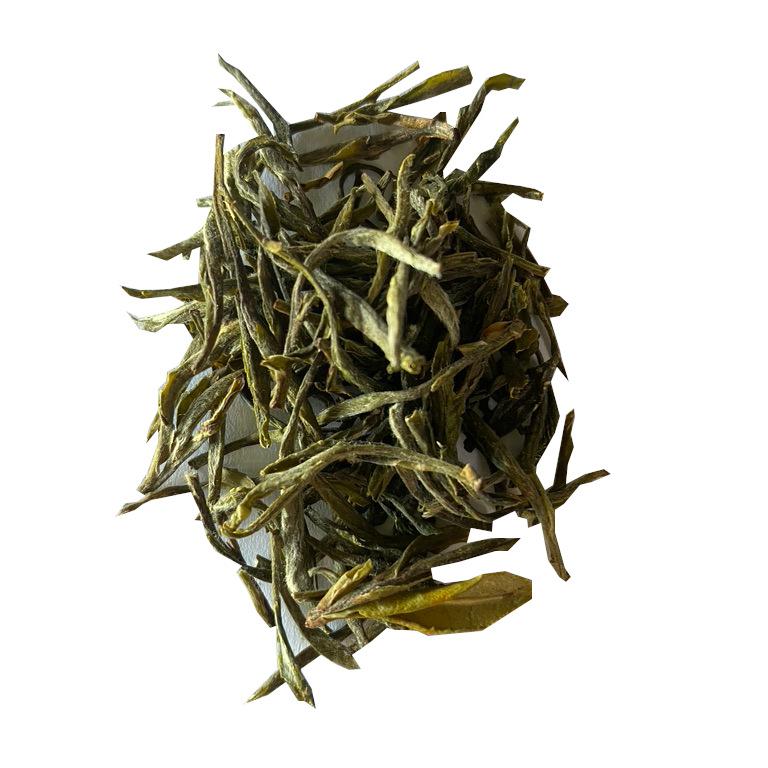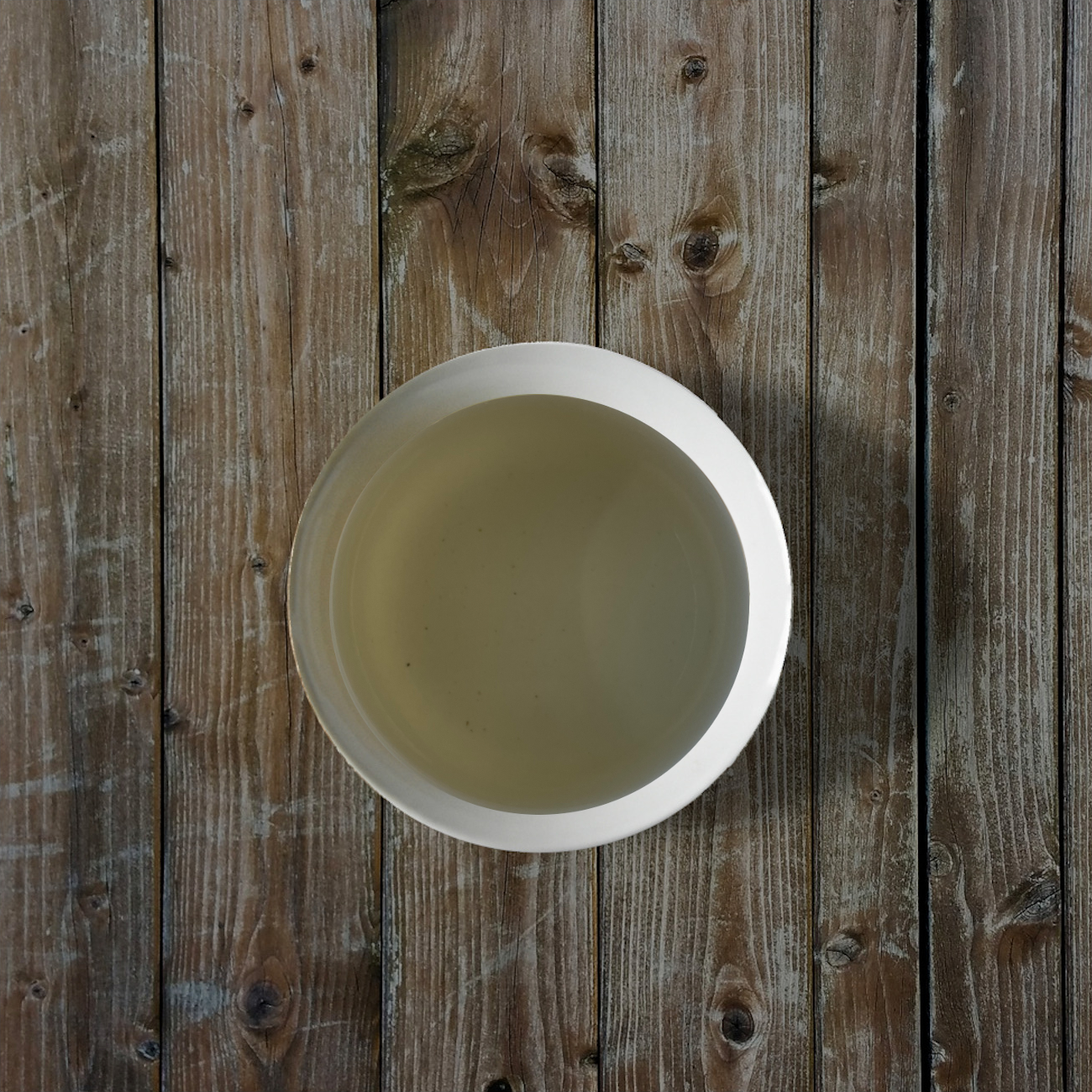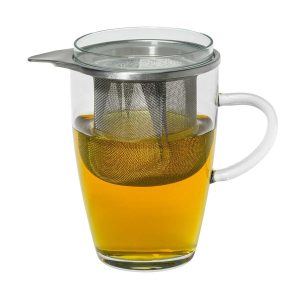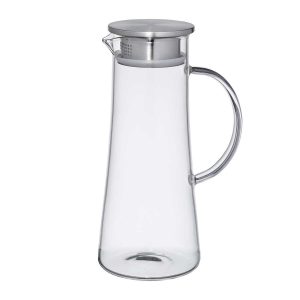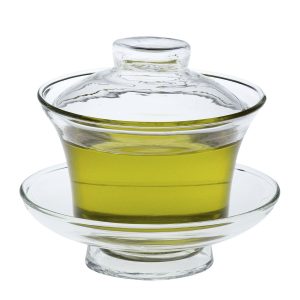Huo shan Huang Ya Tea
INCL. VAT
- 3gr/200ml
- 80°C
- 2-3 min infuse
This yellow tea comes from the province of Anhui in China, which is also the only country that produces this type of tea.Huo Shan Huang Ya means “Yellow shoots made on the Huo mountains. The tea has golden yellow, straight, fluffy shoots that give a nutty aroma and a slightly roasted taste.
Yellow tea is very rare and only comes from the top shoots of the Camelia Sinensis. It is actually half oxidized tea that sits between Green tea and Oolong tea. Compared to the production of green tea, yellow tea undergoes an additional step in the processing process. After frying several times, this tea is moistly covered, so that the heat and water vapor remains trapped in the tea. This “piling” is actually also called “smothering” and causes a hydrothermal oxidation and light microbial fermentation. By leaving the tea for a number of hours, it gets a sweet taste. After this, the tea is finally dried, cooled, sorted and packaged. Because the drying process is slower, the moist leaves get a yellow, golden color, from which this tea owes its name. The yellow tea is as subtle and light as green tea, but lacks the grassy taste. This may appeal to some of us.
Info
- 3gr/200ml
- 80°C
- 2-3 min infuse
This yellow tea comes from the province of Anhui in China, which is also the only country that produces this type of tea.Huo Shan Huang Ya means “Yellow shoots made on the Huo mountains. The tea has golden yellow, straight, fluffy shoots that give a nutty aroma and a slightly roasted taste.
Yellow tea is very rare and only comes from the top shoots of the Camelia Sinensis. It is actually half oxidized tea that sits between Green tea and Oolong tea. Compared to the production of green tea, yellow tea undergoes an additional step in the processing process. After frying several times, this tea is moistly covered, so that the heat and water vapor remains trapped in the tea. This “piling” is actually also called “smothering” and causes a hydrothermal oxidation and light microbial fermentation. By leaving the tea for a number of hours, it gets a sweet taste. After this, the tea is finally dried, cooled, sorted and packaged. Because the drying process is slower, the moist leaves get a yellow, golden color, from which this tea owes its name. The yellow tea is as subtle and light as green tea, but lacks the grassy taste. This may appeal to some of us.
DISCOVER OUR TIPS→
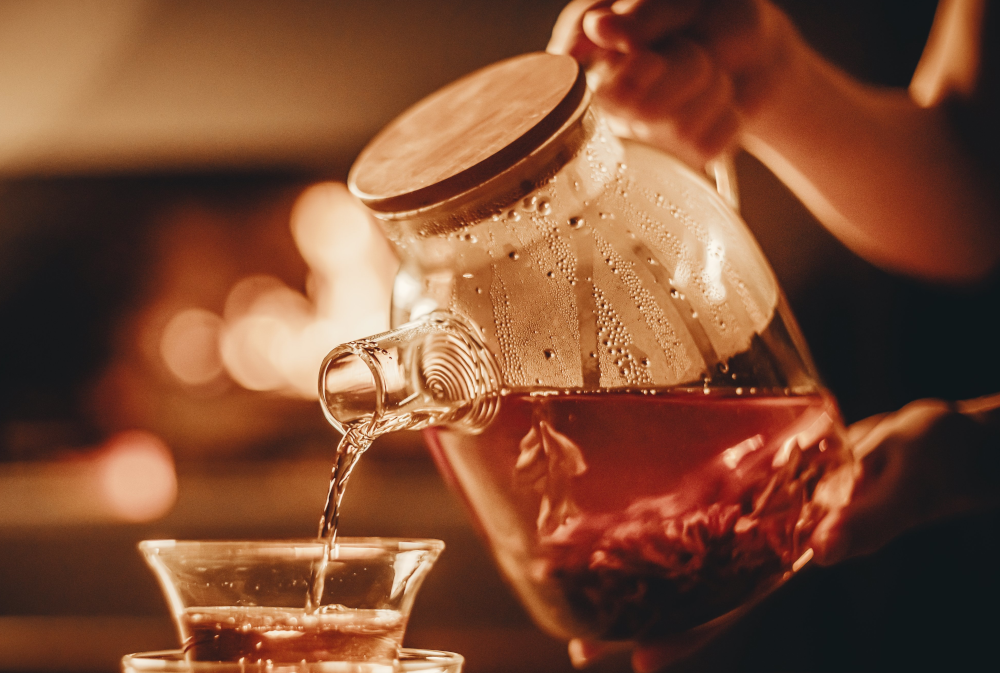
Some Tips
Related Products

